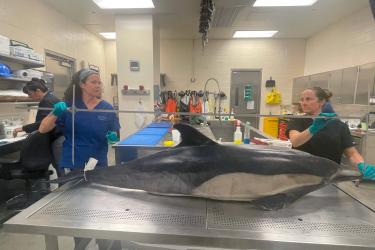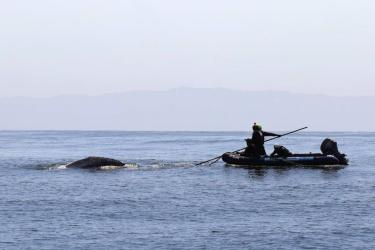NOAA’s Office of Law Enforcement is teaming up with the Office of National Marine Sanctuaries on the West Coast to launch Operation Clean Seas. This campaign will focus on increasing public awareness around sanctuary discharge regulations in the Olympic Coast, Greater Farallones, Cordell Bank, Monterey Bay, and Channel Islands national marine sanctuaries.
“National Marine Sanctuaries are America’s most valued ocean areas,” said Greg Busch, Assistant Director of NOAA’s Office of Law Enforcement, West Coast Division. “Compliance with discharge regulations helps ensure these special places are available for current and future generations.”
The inaugural Operation Clean Seas summer campaign will continue through Labor Day weekend— ending on September 6th, 2021. Throughout this time, informational discharge handouts will be distributed to commercial fishing, recreational, and charter vessel operators during dockside inspections and at-sea boardings. In addition, these handouts will be made available to the general public at national marine sanctuary and marina offices.
Our partners in Operation Clean Seas include:
- United States Coast Guard
- California Department of Fish and Wildlife
- Washington Department of Fish and Wildlife
How You Can Help Protect Your Sanctuary
Managing Sewage Waste
Use sewage pump-out or dump stations or mobile pump-out services to discharge untreated sewage and graywater. It is illegal to discharge these in Washington and California state waters or in Monterey Bay, Greater Farallones, Cordell Bank, and Channel Islands national marine sanctuaries.
Reducing Graywater Discharges
Use a phosphate-free soap to minimize the impacts of graywater on the marine environment. Also, taking showers and washing your dishes on the mainland whenever possible minimizes discharge.
Managing Bilge Water and Oily Discharges
Never discharge oily and dirty bilge water—it is illegal. Keep your engine well-tuned and check hoses and fittings regularly. Place an oil absorbent pad or pillow in your vessel’s bilge and use harbor bilge water and crankcase pump-out stations.
Dispersing Fuel and Oil Spills
Never use soap to disperse fuel and oil spills—this is illegal and harmful to the environment. In addition, avoid using bilge cleaners as they may get discharged overboard. The soaps in bilge cleaners can foul pump-out equipment and render absorbent materials ineffective.
Managing Trash
Always keep your trash on-board. Do not throw cigarette butts, fishing line, or any other garbage into a national marine sanctuary. Take advantage of shore-side facilities to recycle plastic, glass, metal, and paper and try to avoid excess packaging.
For more information about Operation Clean Seas, please contact Andrew Torres, the West Coast Division’s OLE compliance liaison, at (206) 526-6698, or andrew.torres@noaa.gov.


